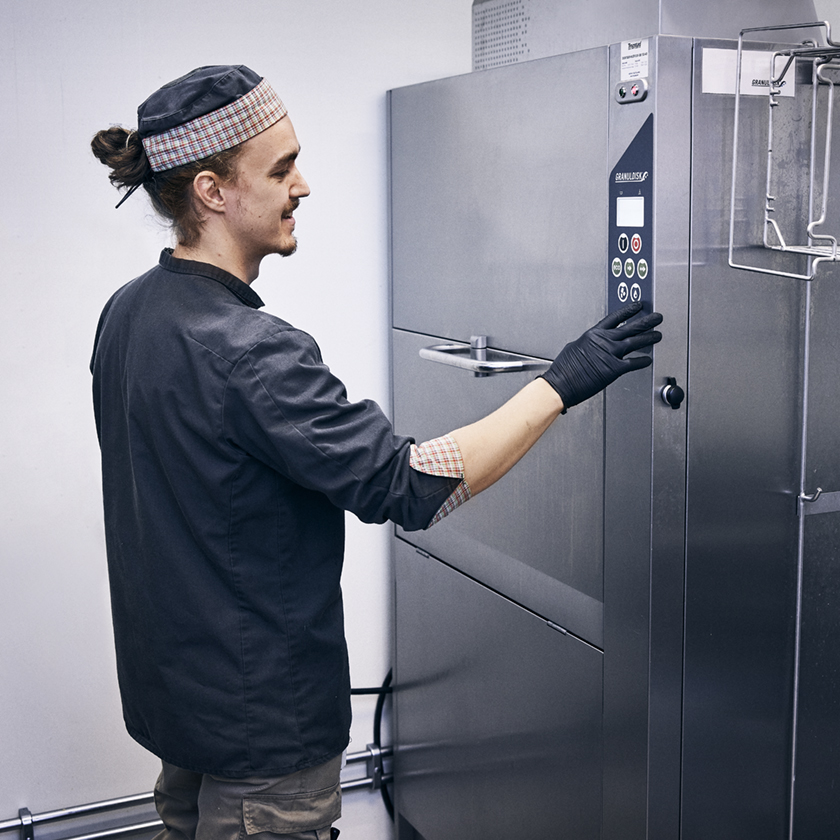Step 3: Proper detergent and rinse aid usage
Selecting a high-quality detergent is crucial for achieving optimal cleaning results in commercial dishwashers.
Contact a supplier of professional cleaning products who can assist with a proper set-up and installation of dosing equipment for detergent and rinse aid, as well as supplying the actual chemicals needed.
Here are a few pointers to consider when choosing a chemical supplier:
1. Liquid or solid detergent
There are pros and cons with both.
For liquid detergents, there are more suppliers to choose from and it will be easier to switch supplier.
With solid detergents that are more concentrated you do not pay for shipping water, however the dosing equipment is specific to each manufacturer which could mean that you will be locked in with the chosen supplier.
2. Water hardness
Consider the hardness of the water in your area. Hard water contains minerals that can affect the performance of the detergent.
Choose a detergent formulated for hard water if necessary, as it will contain additives to address mineral buildup.
You should also consider adding a water softener to your setup. Specifically, when cleaning glasses in high-end establishments, you need to have a reverse osmosis system to avoid water stains on the glasses.
3. Safety and environmental considerations
Look for environmentally friendly options that are biodegradable and free from phosphates, chlorine, and other harmful chemicals.
Even if a commercial detergent has environmental labeling it is still corrosive because of a high pH level and needs to be handled with care, using proper protective gear.
Additionally, consider any regulations if you need to adhere to your establishment’s environmental labeling or program.
4. Cost and efficiency
Evaluate the cost-effectiveness of the detergent.
Consider factors such as the concentration of the detergent, recommended dosage, and the number of wash cycles per container.
Choose a detergent that offers excellent cleaning performance while being cost-efficient for your business.






